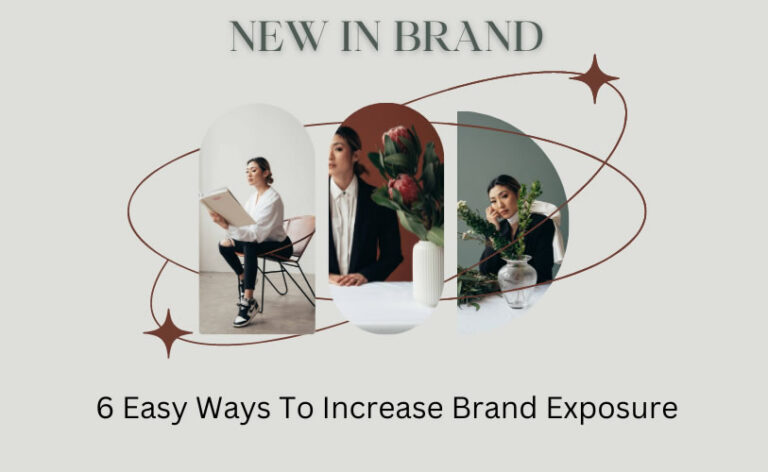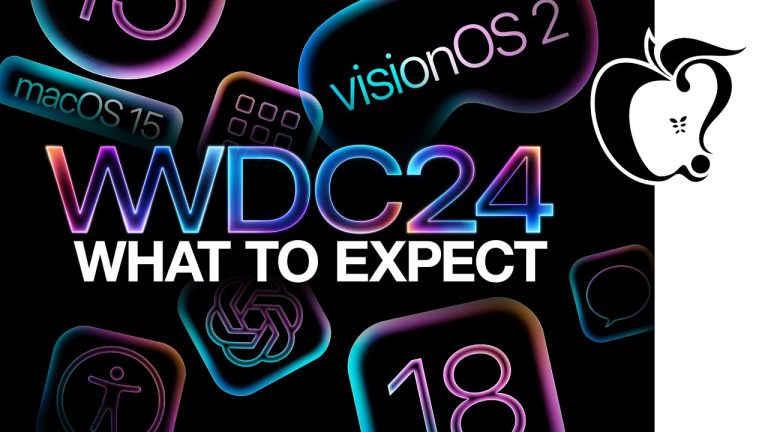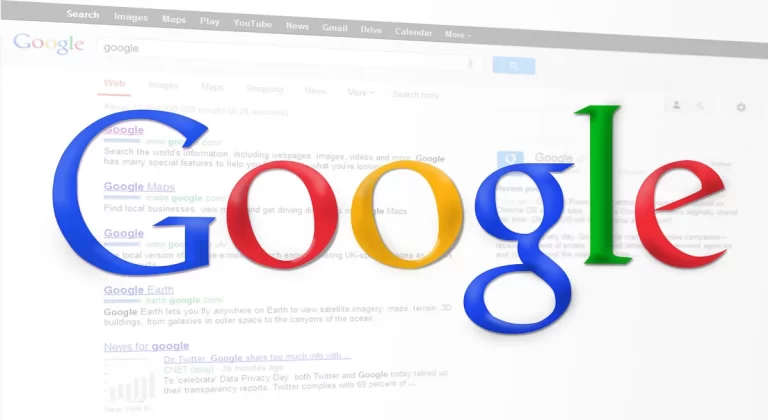>> From theCUBE Studios in Palo Alto and Boston, bringing you data-driven insights from theCUBE and ETR, this is Breaking Analysis with Dave Vellante. >> Adobe Summit 2024 put individualized digital experiences on full display.
Personalization at scale is exceedingly difficult. By applying AI, Adobe showed that it can bring custom experiences to the masses and do so with trusted enterprise grade content. Moreover, Adobe highlighted an expanded market for its three major business segments and is pursuing a TAM that’s approaching $300 billion.
We believe Adobe represents a leading example of AI monetization beyond the two most commonly discussed drivers, i.e., the first being the picks and shovels of silicon LLMs and core AI infrastructure, and two, Microsoft Copilots.
In this breaking analysis, we welcome our friend and CUBE contributor Andy Thurai, who’s the Vice President and Principal Analyst at Constellation Research.
He’s going to review the action from Adobe Summit, which he attended, and we’re going to give our perspectives on the prospects for the company.
All right, let’s take a look at Adobe’s stock performance in recent years. Adobe is roughly a $20 billion revenue company with $8 billion in cash and equivalence on the balance sheet.
They got zero net debt and a more than 10x revenue multiple, so really, really strong from, you know, you can see with many software companies. Now, two months prior to the launch of ChatGPT, you see here Adobe announced this intent to acquire Figma back in September of 2022 for $20 billion.
It was split almost down the middle between cash and stock. As you can see, the outstanding performance of Adobe, the street obviously liked that deal coming out of 2022’s tech downturn. Now, the Figma deal made some sense because Adobe was unable to compete with Figma with their own product.
Now, whether $20 billion pre-ChatGPT was a good price is still a big question, but it really didn’t matter because our friends at the UK Competition Committee essentially killed the deal.
So it was kind of a blessing in disguise.
Andy, from my standpoint, because AI has changed everything, but the street obviously liked it. What’s your take? >> Yeah, I thought, I mean, it’s a good marriage. I mean, Figma would’ve added a lot of value to it, as you said, you know, there are a few things that they have in there, the collaborative tools and the browser-based interfaces. It’s had a really good traction with the creators, right?
But I thought 20 billion is way too high, but what do I know? That’s why I’m not a stock analyst. >> Yeah, yeah. >> But the stock went up. >> But to your point, designers loved Figma.
I mean, they were killing it. And Adobe had its own product. I forget what it was called, D-E something, not DX, DG or something like that.
Yeah, and people didn’t like it, frankly. They just couldn’t compete with Figma. So, hey, if you can’t beat ’em, buy ’em. And, Lina Khan didn’t even have to take a bite out of that because the UK company did it for her.
Alright, let’s look at the ETR data to see how the spending momentum looks for Adobe across its vast portfolio.
This is data from ETR’s Technology Spending Intention Survey, and it shows the spending momentum, or what we call net score over three time periods.
April, 2023, October, 2023, and January, 2024. And that’s in the gray, the blue, and the yellow respectively. So the yellow is the most recent. This is a survey of around 1,700 technology buyers.
In the dataset, in the most recent one, there were 872 Adobe accounts, so big representation in the survey.
That’s a significant end. And as you can see, the breadth of the portfolio, you got Adobe Sign, which competes with DocuSign, it’s a marketing platform, it’s content management. Marketo was in there, which Adobe acquired for almost $5 billion from private equity firm, Vista.
FinTech is in there and Workfront, which is a workflow management software.
And while look, this maps to ETR’s taxonomy, right? ETR is a survey. They, the TSIS survey, they do the same survey each quarter, so they have to have a taxonomy that applies to every company, okay?
So it doesn’t precisely map to how Adobe views its business, and we’re going to talk about that, but we can infer from this, and the real point, which is there are a number of areas in the yellow that are showing acceleration and accelerating momentum, and/or are holding steady.
So most firms data in the dataset, we’ve been analyzing this stuff for years, is softer right now.
When you look at that chart for most of the companies, you know, with very few exceptions, the yellow would be lower. But these guys, Andy, their portfolio has a lot of momentum.
I’m sure you saw this, it was palpable at Summit from the videos that I saw. >> Yeah, no, it’s again, some of the users, I spoke at the conference as well, the creators and the marketers love Adobe, right?
So they, yeah, they had some challenges, particularly when it come to Firefly, initially when it was released, not much of attraction.
And, you know, the OpenAI and other LLMs that are coming in, that made a huge impact on, they also went after the image and video generation At that point, Adobe didn’t particularly have an answer.
So there were some headwinds at that point, but now with the latest announcements they’ve made.
By the way, all the announcements, most of the announcements they’ve made at the conference, the announcement, not just like some of the other announcements saying that, okay, we are announcing for the sake of announcing it, that it won’t be available for next year. With Adobe, these are either already available in their product, baked in, or it’ll be available shortly, or at least it’s available for early adopters.
So people can use it real now.
And there, some of those announcements are very good, very good. >> Yeah, so that’s a really important point, especially for investors because it means monetization. >> Right. >> That’s what they care about. And everybody’s looking for AI monetization.
I mean, obviously Microsoft talks about, you know, their AI revenue. IBM actually gives some guidance on it. Dell talks about its backlog. I think HPE does as well. And CEOs are starting, CFOs are starting to talk about it.
And so let’s get into some of the takeaways from Adobe Summit, and you can give us your perspectives on kind of what you learned. It was 11,000 attendees, so a lot of action there. >> Massive. >> And let’s start with Firefly. I mean, it was on full display.
That was the big star of the show at its one year anniversary. In the Financial Analysts Conference, they definitely gave some guidance that, or some indications that it accounted, Firefly has accounted for a 30% increase in new subscribers.
So I guess, you know, the point there is, and we can talk about this, well, let me just say, the big focus was on governed, and predictable, and trusted AI.
So the point about new subscribers is a lot of people thought that we were going to be looking at credits as the big driver here, whereas it really is an AI tailwind. So what’s your take on Firefly?
What’s the takeaways that you have? You saw demos, what are the key points? >> Let’s start out with the Firefly in particular, and then we’ll talk about the announcements, right?
So when it comes to Firefly, the Firefly is not just one model, it’s a set of responsible AI models, set of models rather, which are generated in a responsible way.
So what do I mean by responsible AI models, right?
The one thing Adobe did, which is slightly different, they, from the get go, they call that as a responsible innovation, right? So in the age of innovation, how to be responsible, how to do responsible innovation, that is the theme.
So what they’re trying to do is one, these are all, obviously this, most of the models are at the current time is more about image generation models.
They’re not at the video, audio, and the 3D rendering will be coming later in this year, but right now it’s mostly image. So what they’ve done, Adobe, you know, they had a leg up, unlike some of those other public LLMs, other companies that were creating, they had to go and steal, scrape information from the web, that’s why they’re getting sued.
But Adobe, they had their own stock of licensed images, multimillion already in their portfolio. And then they have this collective license agreements with others and they were able to get the licenses. So they trained their entire model based on the images and pictures, the safe data. >> License.
The safe data.
That’s one, okay? And the second one, telling examples that, you know, one of the major issues, this is what I mentioned earlier on when we were talking, the problem with OpenAI and other LLMs is that, you know, when it comes to innovation, we talked about this multiple times, there is this technology innovation and there is customer needs-based innovation.
The technology innovation is your OpenAI, ChatGPT. So it came out and everybody is gaga for it, they’re like, oh my god, I need to go and use that, right? But then how do you convert them to customer-acceptable, customer-based, enterprise grid innovation?
That’s where Adobe is able to bring this into for customer needs.
In other words, for example, one example they were giving is, let’s say you are trying to put kids in a picture, but that happened to have beer or alcohol in it, or guns in it.
And then if you have a corporate policy set up in such a way that the kids cannot be in this, that’s just one example. There are things like your brand guidance.
You know, the old Walmart story, right? Put the beer next to the diapers. Not with AI, you can’t do that, right? >> So, you know, it’s because of that, the enterprise adoption, I could see that happening pretty big.
So not only the models are trained in a responsible control image so the output can be controlled, but also you can guide them for your brand and the way you want, right?
And then the other innovation among the Firefly models, what they had, which I think is going to be huge, is that you can custom train those models to fit your brand.
For example, if you’re IBM, if you’re Coke, if you’re Disney, those are the big companies that are using them. Delta is another one. Those are the ones that are using it.
So you can take the model and then you can train with your own set of images, and styles, and guidelines, and then it’ll become, the model will become your brand.
You could still use it within Adobe, within a set of guidelines on brands, so whatever it produces would match what you’re expecting. So it speeds up the process. >> Your style guide, you’re saying.
It will adhere to the edicts of your organization. It’s smart enough to figure that out once you feed it in. >> Absolutely. Absolutely. >> That’s pretty impressive.
Okay, you also gave another, actually, you know what, let’s bring back this slide because I want to ask you, Andy, on the third to the last bullet here, I probably should have ordered this differently.
They announced the coalition, or maybe they announced it before you knew it was coming, but they made a big deal out the show, the Coalition for Content Provenance and Authenticity C2PA.
Is that related to that focus on governed, predictable, and trusted AI, or is that more sort of a compliment that Adobe is just really marketing and advancing this notion of provenance and trusted AI? >> Yeah, the simple answer is yes. Matter of fact, I’m part of the C2PA organization as well.
It’s a nonprofit organization.
I mean, it’s only members Adobe, there are a lot of other members, member organizations in there, but individuals like you and I can go and sign up as well.
So what they’re trying to promote is the one, to prove the sourcing of the content where it came from, who created it, okay? So that gives you an opportunity as a original creator in the future for copyright, ownership, IP issues.
And if you want to monitor that, if somebody else is plagiarizing and stealing it, so you can have whole alliance. And two, you know, if you want to know the truth, remember I posted on LinkedIn all the time saying that, you know, go to the source and get the truth?
And that will give you the digital, the combination of watermark and metadata combination that they’re working on, will give you an opportunity for you to track it to, you know, where that came from, right?
So it is actually a really good initiative. C2PA.org is the website that they have a constant authenticity initiative. >> So this helps attack deep fakes, for example.
Right, exactly. So you’re saying that Adobe will be able to somehow either watermark or identify it as a fake, so that, that’s assuming you use the Adobe platform.
Right, right. Well, so the platform has a lot of prominent companies. And so at the end of the day, one part is creators who creating that, you know, to put the watermark, the onus on them.
But the other part is also about the publishing houses on enforcing this, right? So there are majority of the, I believe CNN is also part of that, but almost all of the newspapers, big ones like New York Times, Washington Post, and BBC, and I believe CNN, they’re all part of this.
So they will not publish any, right now it’s mostly images, they will not publish the content without knowing the pronouns and without having the approval of the original owner that it can be published- What about social media companies though? I mean, that’s where the big problem is, right?
Actually, Facebook is part of that.
Okay, so Meta, is Meta onboard, Twitter? Twitter, do you know, X? Twitter have their own mind, so don’t know if they’re part of it.
ByteDance, who knows what’s going on there?
But that, ’cause I think social media is where the big challenge- >> And Microsoft is part of that, so therefore LinkedIn. But nonetheless, this is a technical challenge that they’re solving and I think they’re not the only one.
But, okay, let’s, I want to come back to this, those takeaways again, if you would, Alex, and the next bullet here is the third one down, new monetization in 2024.
This is the exact point that you were making. They announced that they would have Express Mobile and an AI assistant for Adobe Reader, which everybody has Adobe Reader, and then Firefly for video, audio and 3D.
And I believe that will be second half, I think the Express mobile I think is right around the corner and maybe even AI assistant for Reader. So this is new monetization in 2024, Andy, correct. >> Yeah. >> So Wall Street will get excited about that because, you know, you’re talking about AI dollars to the income statement. >> It’s not just that.
So I don’t know if you get a chance to watch that, there was a news flash they made on the stage. You know, what is the amount of proven content pieces that they generated using AI in the studio? 6 1/2 billion. >> Yeah, it was insane. >> Billion.
I was blown away. And we’re not talking about some AI-generated random pictures, these are corporate-ready, governed images that is published that can be immediately monetized.
So talk about a monetization angle. If you provide a platform for these creators to monetize that, and if you take a share of that, imagine the billions of images being generated and then either Adobe owns it, controls it, or has a license or some way to track it back to them.
They have become a powerhouse by doing this release.
So can we talk about personalization at scale? Because it seems like this is Adobe’s really, you know, significant differentiator in the market.
You were giving me an example, I think you saw a demo or you were talking to some folks, maybe both, about the ability to scale. I mean hundreds of thousands or millions of users receive a marketing campaign, and each one as a different image or slightly different change that will resonate and be personalized for that user.
Am I getting it right?
How do they do that? Is that, I mean, it’s obviously unique, particularly at scale, but I I would like you to, you know, give us some perspective.
So there are two things that they’re trying to do, which blew me away, right? Again, this was my first Summit visit, so a lot of things were new, but those particular two things that they showed me. One, they have this solution or product called GenStudio, GenStudio- >> GenStudio?
Like GenAI Studio? GenAI Studio. The generative studio, GenStudio, is basically about the democratization of marketing. So it can allow you to do cross-channel campaigns on-brand content.
So I’ll give you an example of what they were trying to do, right? So you are a big brand, let’s say hypothetically, IBM, Disney, whatever, right? So I go in there and I want to create content that I want to publish and send to my folks who are willing to buy things, right?
So one, I generate assets, right? Right now it’s mostly images, but video, audio and whatever, I generate that, right?
And I can also create variations.
Again, we are talking about just doing a text-based prompting, and then it’ll generate the content the way you want it within your enterprise guidelines that you already set.
That guidebook we talked about, guidance, style book and structure, right? And then I could also say what place I want to publish this, whether it’s LinkedIn, Instagram, Twitter, Meta, whatever. It’ll create variations of that.
And then you can also create multiple variations of that campaign, a different colour, different background, what have you. What is compelling in that is each of that, when you do it, based on your brand perception, there’s a simulator that runs in saying that, okay, I want to run this campaign.
Give me an idea of how successful this is going to be. They will show you, again, this is simulated based on the customer base you have chosen for that particular campaign.
It’ll show you the impressions that you’ll get for that. It’ll show you the click-through rates, it’ll show you how many people would add it to your cart, what kind of metrics, and what kind of revenue it’ll potentially create at the end of the day.
They made a big deal about their analytics. Which was pretty good. And on top of it- Key marketers. So that’s one piece of it about revenue generation.
The other piece is, assuming that it sends a campaign, when it sends it to you, right now in the marketing, everybody is talking about personalization.
It’s mostly at the talk level, but this one, at least a sample they showed, showcase demo, they were able to show if they create a campaign, if they’re trying to sell a shoe, if they send an email to you and me, it’ll look, the email will look for your taste, including your discount that you would prefer.

Let’s say you want a 50% discount, and then it’ll show you red shoes, the same thing can come to me with the blue shoes and a 90% discount because I’m a cheapo. (laughs) >> And they can do this. ’cause they have the data.
They have the data, they have the preferences, they know the personalities. >> But it’s their customer’s data. >> It’s the customer’s data, yes. >> That they’re leveraging, right? And people have opted in obviously to share those preferences, or they just know because that’s what they buy.
And I want to make a quick point on that. That customer’s data, that they’re bringing in a new option called Federated Audience Composition, which means you don’t have to, I know, we all have the databases, the customer database, CTP and the whole nine yards.
But what they’re suggesting is you don’t have to compile them, boil them all into one database. You could keep where you want the data.
For example, the examples they’re giving were, that you can keep your customer data on preferences and personal as in Snowflake in AWS, you can have it anywhere you want.
And then they’ll compile the composition of the audience for a specific campaign. And again, it’s not just a persona base, it’s an individual preferences base.
If you want a certain thing, you’ll be given that information the way you want it to consume, not just want to consume, the way you want to see which will appeal to you.
So your click-through rate will increase and improve. And then they also, another tool in which you’ll run the campaign through, it’ll show you how much of brand compliance it is, and then you can go and improve the way you want it to make it 100%.
Okay, so those are pretty powerful examples and you saw these on display at the show. I want to go, if you would Alex, bring that slide back up. I want to jump ahead here. We talked about the Coalition for Content Providence C2PA. The penultimate bullet here, is the ecosystem partners and brands.
I want to talk about that a little bit, talk about the tech behind this. So we’ve just given a few examples. IBM, Microsoft, Disney, Coke, Pfizer, IBMI think is on both sides, correct me if I’m wrong.
I think IBM is providing technology in the form of GenAI, Watsonx, for example. They’re also a big user of Adobe. >> Massive user.
Microsoft’s a part, we’re not listing, I think I saw Nvidia on one of the charts, I think I saw Google. >> Delta is up there. Major League Baseball. Okay, so both technology, we’re talking here about ecosystem technology partners and brands that are buyers.
Brand partners. Okay. So give us your take on what you saw there, the technology behind this. How unique is it?
And the examples that you saw from the brands and the customers that you talked to, how well did it align with their high level, you know, very scripted messaging?
So the most compelling, which was fully showcased there, and then also they had a separate analysis for that as well, that IBM partnership.
One of the things IBM was telling was that before they partnered with Adobe, they used to spend about 20% or so of their time in creating content, but about 80% of their time in maintaining and operationalizing then bringing it to brand, you know, brand, how do you call that?
Brand values or brand governance within their guidelines, right? But now with the usage of Adobe, it’s a matter of minutes, you could do the same thing, once as soon as you create the content.
This means almost, probably not the whole 80%, but 50, 60% of the time what they’re doing, that work, is freed up the money that’s freed up. I don’t know if they’re related or not. IBM became efficient. They have a production efficiency in the marketing teams. There were a massive layoffs couple of weeks ago.
So there is that negative side as well, right? And then Delta, the guy talked about delivering- >> Depends who you are, (Andy laughs) whether that’s negative. If you get laid off, it’s negative. In Wall Street, you love it. >> Yeah- >> It’s an example of a company, IBM, using AI internally to put money in the bottom line.
It’s going to happen.
So nobody likes to talk about that. But look, it’s the world we live in. And so- It is happening, I mean, you know, machines have always replaced humans, and we’ve driven productivity, and just so happens it’s cognitive, you know, replacement now, but it’s happening. So you have to embrace that, we have to retrain people.
You’ve got to think differently in terms of, you can’t protect the past from the future, right? It is, and in the past, the non-skilled or manual labour work was the one that used to be replaced.
But now, the cognitive creative work side of things is getting replaced, which is where it’s getting a little murky, you know? So, I used to think human brains could never be replaced, but we are getting there. (laughs) >> Yeah well, murky in the sense that people don’t like to talk about it, but there’s clarity here.
And frankly, the examples like this are, this is what actually, show the promise of AI, and it’s a proof point to the promise of AI. >> It is, absolutely.
If we don’t have that type of proof point, then there’s a problem. You know, AI will be a promise that’s not fulfilled. Okay, the last point on that slide is the TAM, and I want to just get your take on this.
I set up for almost 300 billion. It’s a $293 billion TAM, I think by, let’s call it 2027, I forget the exact number. And at a high level, think of Adobe’s business in three categories: Document Cloud, Creative Cloud, and DX, which is Digital Experience.
And they gave targets these numbers, 47 billion for Document Cloud, TAM, Creative Cloud, 90 plus billion, and then digital, I mean 155 billion.
What’s interesting to me here, Andy, is they’ve got this broad portfolio, the Figma deal, it’s almost like the Figma deal, the reason I say it’s a blessing in disguise is ’cause it really has forced Adobe to think deeply about innovation.
The Figma deal goes south, but the gift of AI has been presented. So they’ve got a strategy that’s built around data, around their own models, very heavy emphasis obviously on provenance, and then they’ve got the apps above it.
And what I like about this, and we said this upfront, is this is not just the picks and shovels of this. We’ve written a lot and talked a lot about Broadcom Nvidia, and others, and of course, Microsoft gets all the attention with OpenAI.
But this is a very clear example the things that we’ve been waiting for, Adobe, I think, is probably the best example of how an enterprise software company is using AI to really drive value.
You know, we see a little bit with Salesforce, you know, Workdays, you know, working on it. Obviously Oracle’s driving AI into their platforms, but this is real tangible monetization, which gets exciting. So your thoughts on their TAM and their expanding TAM, which I think is substantially larger than what they put forth a couple years ago, maybe even 50% larger. You said it right. I mean, I can’t argue that.
When it comes to enterprise’s usage of AI, it’s not that you give the picks and shovels and then tell them, hey, you go figure out how to use that. No, no, they are infusing AI into all of that. For example, another thing we didn’t talk about is the fact that you know, they have this whole workflow set up.
You know, if you create content, you send it approvals and the publishing, the whole nine yards. It’s in Adobe, inside now, right?
People are using it, enterprises are using it. But now by infusing AI in each stage of this, whether it’s for content creation, for approval, for workflow management, they’re bringing to the enterprises in a way that they have been already using it, just enhanced with AI. It increases the productivity.
And some of the examples have been that, you know, I used to talk with them, say that, okay, they showcase that, how much time would it have taken for you before this to create this, whatever that is? And they told me it used to take me if not days, it used to take sometimes weeks for us to figure out this campaign.
And even after all that, we wouldn’t know if the campaign is going to be successful or not. But this one, what we have, we could figure out in a matter of hours if not minutes if this campaign is right, if it is going to work, is it worth spending the money on. That’s unbelievable.
Plus another thing we didn’t talk about, there is this partnership between Adobe and Microsoft was showcased on the main stage. What they’re trying to do is that they’re going to integrate the Copilot work with Microsoft.
It’ll bring in Copilot for marketing. So what it’s going to do is that not only it can do all the work within Adobe, but it can share it across all the Microsoft products, such as your Dynamic 365, Outlook, Teams, Word, and Workflow.
So essentially you don’t have to go do everything in here. You could embed that into all of the office workflows and Microsoft stuff. And that’s what is more important.
Everybody’s talking about coding using Copilot, but this collaboration work efficiency with Microsoft, I think it’s a pretty big deal. >> Excellent. Okay, let’s close. We’re going to look at how to think about Adobe going forward. And so I’ve got some points that I want to make and then I want to get your take and give you the last word here.
The Summit very clearly showcases that AI innovation as we just talked about, beyond just the picks and shovels and beyond, you know, the Microsoft OpenAI deals, very clear examples of AI, inside, embedded, infused into applications that are driving real ROI, and we’re seeing that monetization aspect of it as well.
That’s going to hit the income statement, already is, in this year as well we saw the uplift thanks to Firefly and in customer ads. So that’s very strong. And they’ve got different models, they’ve got freemium for some, they’ve got, freemium and paid, they’ve got others that are, you know, direct. They’ve got the credit model.
So really a lot of options to consume AI. The portfolio is very broad. We saw that in the ETR slides. They’ve got a broad portfolio, they’ve got data, and they’re proving this at scale. Andy, you made a big point about trusted AI.
These are the things that underscore Adobe’s, which in my opinion, is a highly differentiated strategy. They’re a clear leader here. They’ve got a really big TAM across Doc Cloud, Creative Cloud, and Digital Experience, and they have momentum in all those businesses.
Their CFO sort of laid that out in the Financial Analyst meeting. And in the amount of monetization of AI, it’s emboldening Adobe to aspire for $30 billion in revenue.
But now of course they didn’t give a timeframe on that. I don’t know how much they talked about this in the Industry Analyst session. But it took Adobe a decade or more, more than a decade probably, to get to five billion.
They went from five to 10 billion in five years. >> Yeah, fairly quick.
>> Right? And so pretty quickly they doubled.
So now they’re talking about, you know, there at 20 billion to get to 30 billion. Now, they wouldn’t give a timeframe, but the inference is maybe within the next three to five years they could get there. So what’s your take?
Anything we didn’t cover? I’ll give you my final thoughts. The floor is yours. >> So few thoughts on that. For a monetization angle, what a lot of people are not realizing is it could go even more parabolic than that.
Right now, the content authenticity initiative and the content pronouns, or rather the, let’s talk about that content supply chain from the creation to publication, they’re just tools helping them out.
But there could come a time that would say, to validate the pronouns of this, in order to do some of this, I’ll charge you X dollars for that. They’re not thinking, I put that idea in their mind, but that could create a decent revenue source for them. >> Didn’t you tell me there was another indemnification that they’re- >> That’s right.
So one of the things that they’re offering, because they are so confident about their model, so confident about the way they created that AI, they are offering full indemnity to any of their customers who are using it.
I mean there are other companies, Microsoft is the first one to come and offer that, they’re offering indemnity because people were scared to use their AI because they were getting sued by the New York Times, of course, by GitHub users, and all of those guys who are suing them saying that it’s plagiarized content.
But Adobe went out and said that it is not plagiarized content, it’s our own content. To give, you know, confidence to the customers, they said, you know what, on top of it we’ll give you a 100% indemnity.
They are very confident that, you know, they don’t have to go to that level because it’s all owned by them, that copyright owned and IP owned, whatnot. So they’re offering that, that’s a pretty big deal.
Plus on top of it, there are other revenue channels in the content supply chain they can get involved in, which they’re not thinking about, which could increase the revenue pretty high.
Look, at the end of the day, AI is the best thing ever that happened in many, many years. But the problem is, as I was telling you earlier, AI has a mind of its own. So it could do whatever it wants to do, not what you want it to do. So that’s why the prompt engineering is a pretty big deal.
Prompt to engineers, just Google it, you’ll see it and how much they’re getting paid.
So you need to do a very clever prompt engineering, you have to tell in very long statements. I mean some of those things for a proper output, if you look at it, you could see it.
You got to give such a big prompt statement for it to produce whatever you want in the way you want it. What Adobe is trying to do, and even if you do all that, using that, it’s still somewhat sceptical because you don’t know you’ll get sued for using that and you don’t know whether it’s within your style or structure.
What Adobe is trying to do is to minimize that work. You don’t have to do extra elaborate prompt engineer work, give one or two prompts, give our guidance, you tell me who your brand is, we already know 80% of who you are, and we’ll produce something that’s usable and trustworthy and then we can save you if somebody comes after you.
That’s huge. >> Yeah, and that’s interesting. I mean, so Adobe’s doing it.
I know IBM has some kind of similar indemnification for certain products. I think Watsonx, certain aspects of Watsonx. I’m not sure exactly what, but I know they’ve done some.
Yeah, indemnification, I haven’t read the fine print and you always should in those things. But nonetheless, the fact that they’re using that in their marketing will put the pressure on them to make sure that the fine print isn’t rigged, you know, as you see in a lot of these things.
We guarantee that you’ll save this much, and then the fine print says, if this is this, and this, and this. So, alright, good. Anything else you want to share? Do we cover it all? I mean, what’s your number one takeaway at the show?
A lot of buzz, met a lot of interesting people. >> Yeah, I did, I did. And it’s buzzing. The crowd is buzzing and people seem to be very excited about it. And the close of the show, they brought the big guy Shaq to close, Shaq O’Neal, to close the show.
A big star. They did the, it’s called The Snakes. I saw him up on stage. Yeah, so what they do is that they, I think they presented about seven ideas and then they presented to the audience and then Shaq was moderating and coordinating that.
He was really funny. And then all seven seemed to be really good ideas. I don’t know how many of them was going to get implemented, but they’re all in the POC stage pitched by the engineers.
Do you sense, I mean, I was saying it kind of forces Adobe’s hand, the Figma vaporization deal, of that deal, forces their hand to really innovate.
Did you sense that there was a commitment? Hey, we’re going to go this on our own, we are going to innovate, we’re stepping up. Almost, like you look at their stock chart, it was almost like desperation at the bottom in 2022. So they go out and pay $20 billion for Figma who’s beating them and now they’re forced to innovate.
Are you confident that they’ll be able to do that and carry them to 30 billion?
>> I think so. I think so. Because I mean, it’s not that, you know, they are just, you know, stumbling upon AI just recently.
They’ve been doing that, I mean, the Firefly model has models that were released more than a year ago, right? So they just stepped up their game.
Now that they probably have that $20 billion lying around they could do it and know some things. >> They’d have to pay a billion-dollar kill see? >> Right, oh that’s…
They got nine billion more than they would have had.
But every one of the folks I talk to, the executive team, they’re all very excited about what they’re doing, what they’re bringing to the team. But more importantly, the customers seem to have the same opinion. And all of them, they were like, “What do you think of these features?
” And they’re like, “Oh, absolutely amazing.” And I think they’re going places. >> Andy, thanks so much. I know you’re writing a report on this, which we’ll be looking for. When’s that going to be out?
It’s in the draft. It’s going through a review process.
I think it’ll be released in about two weeks.
Well, thanks for taking the time. You’re a great member of our community, our firm’s, Constellation, and theCUBE, theCUBE Research and SiliconANGLE work together on a lot of different projects. I appreciate you coming into the studio. >> Thanks for having me. I appreciate it.
Thanks to Alex Myerson and Ken Schiffman for the production. Alex also does our podcast, Kristen Martin and Cheryl Knight help get the word out on social media and our newsletters. And Rob Hope is our Editor-in-chief over at siliconangle.com.
Remember, all these episodes are available as podcasts. wherever you listen, just search Breaking Analysis podcast. Appreciate you subscribing. I publish each week on thecuberesearch.
com and siliconangle.com. You can email me at david.vallante@siliconangle.com or DM me @dvallante, and comment on our LinkedIn posts.
Appreciate thoughtful comments, and please do check out etr.ai with great survey data. They continue to expand their presence in the IT markets and beyond. This is Dave Vellante for theCUBE Research Insights powered by ETR. Thanks for watching and we’ll see you next time on Breaking Analysis.
Read More: Leading Into the Future of Work
As one of the top digital experience conferences in the world, the Adobe Summit is one of the places to get familiar with the latest trends and innovations in marketing, commerce, and customer experience.
The conference consists of a series of keynote sessions with industry leaders and Adobe executives who introduce massive marketing strategies and new technologies.
In addition, the event offers numerous presentations on digital- and data-driven trends, interactive sessions, and workshops where one can learn the best practices and digital case studies.
Such timely topics include AI-powered personalization, data-driven decision-making, and omnichannel customer experiences. The event also helps connect professionals of all digital backgrounds, which leads to numerous ideas and game-changing partnerships.
In conclusion, the Adobe Summit is a trigger for digital transformation and the future of customer engagement.
Read More: Is Tech Making Lottie Animations Better or Worse?







